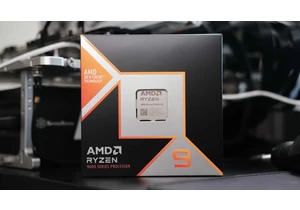China has been the manufacturing juggernaut of the world for decades, thanks to low labor costs and a lot of business-friendly moves from the government. But now that the U.S. is apparently on a very personal crusade to disrupt this status quo, businesses are starting to look elsewhere. Asus recently confirmed that it’s moving PC and motherboard production elsewhere…but not to the U.S.
According to a representative speaking to investors on an earnings call, over 90 percent of PCs and motherboards destined for the U.S. market are now being manufactured outside of China, primarily in Thailand, Vietnam, and Indonesia. The translation provided by PCMag does not explicitly call out U.S. president Trump’s deep and constantly shifting import taxes as a cause. After a wild escalation of tariffs earlier this year capped at 145 percent, the current tax rate for goods and materials shipped from China to the US sits at 30 percent. Most other countries have a 10 percent tariff, with higher taxes set for certain countries and industries.
Trump has often wildly swung back and forth on tariffs and other economic policies, most recently threatening a 100 percent tax on all imported chips with exceptions for companies that are investing in U.S. manufacturing. Asus, notably, would not qualify for this exception, though the chips contained in its products might, as they’re provided by companies like Intel, AMD, and TSMC.
Motherboard manufacturing, which relies on hundreds of individual components for each board, is an especially unlikely candidate for shifting to U.S.-based manufacturing. Aside from the higher costs of labor and real estate, the simple logistics of creating these devices are so concentrated on Asia that it would be all but impossible to move to any western nation on a large scale. Manufacturing in China is still so lucrative, even without devices sold in the U.S., that its domestic business is unlikely to be imperiled by one country massively taxing imports.
U.S. and international businesses that rely on China for manufacturing have been scrambling to adapt to Trump’s tariffs for most of 2025. The increased costs have driven prices up, especially on finished goods. Nintendo, notably, made a shocking increase in the price of the original Switch console, now almost 10 years old, to adapt to market trends. Asus laptops announced at CES reached the market with price tags notably higher than previously indicated, though they’ve also gone on sale shortly thereafter.
The most visible upcoming product from Asus is probably the ROG Xbox Ally handheld, made in partnership with Microsoft (which also had to raise prices on years-old Xbox hardware). European prices have allegedly leaked at €599 and €899 for the standard and upgraded X variant, but despite an expected announcement later this month, there is no price information available so far.
Login to add comment
Other posts in this group

AMD’s share in the desktop PC market climbed by a mammoth total of 9.

Have you heard this one before? A scrappy entertainment company launc

Gaming desktops are great, but they are, essentially, boxes. Maybe th


Can you imagine yourself having a conversation with Windows about wha

I have yet to see an OLED gaming monitor go below the $400 mark, and

Microsoft really, really, really wants you to start using Edge as you
